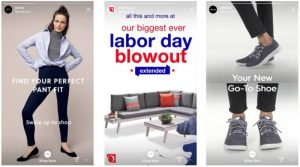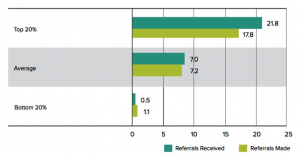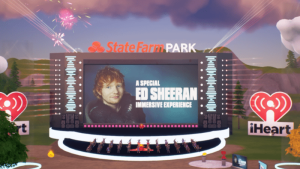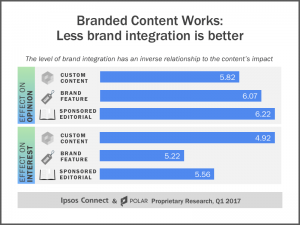— August 20, 2019
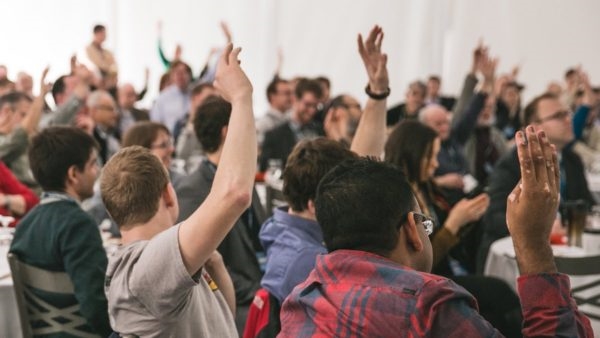
Upgrade your agency’s lead-gen events via smart planning, execution, and follow-through.
Running your own lead-gen events can be a great way to find new clients… but if you get it wrong, your hard work might be for nothing.
Sound familiar? I feel your pain; I’ve helped organize 200+ events since 2012, on both a paid and volunteer basis.
Want a better ROI from running your own lead-gen events? You need smart planning, execution, and follow-through.
Today, I’ll share my tips on how to leverage your agency’s lead-gen events. This includes:
- A key mindset shift you’ll need to navigate
- A discussion on what’s different about your own events vs. speaking at someone else’s event
- My 47 actionable tips to help you get better leads
These include tips I’ve shared with clients, as well as new tips I haven’t shared before. The article’s long… but worth the read if you want better leads!
Assumptions: You Have Some Event Experience, and You Choose to Put Audiences First
In this article, I’m going to assume you’re running occasional lead-gen events at your agency today, or you have run them in the past and are thinking about trying again. If you’ve never run an event, this article will help you decide whether to pursue or shelve the lead-gen strategy.
Much of my advice applies to virtual events, too (like webinars, Zoom video calls, and online “Office Hours” sessions). And they largely apply to events you run for complementary companies (e.g., a HubSpot or Shopify user group), although they’ll have extra parameters.
If you do nothing else, focus on delivering audience value and leveraging followups from the event. Think long-term, and don’t do it alone—share this article with your team, to enlist their support in boosting your event ROI.
Read on for a deep dive… and happy lead-gen!
Mindset Shift: Think Beyond the Event’s Start & End Time
A lot of busy agency leaders throw together a lead-gen event, focus on making it go smoothly, and then collapse from exhaustion afterwards. Or the owner delegates event planning to an overwhelmed and/or inexperienced junior team member, hoping for the best.
I understand how this reactive approach happens—but it hurts your ROI on time, money, and focus… because you’re not being intentional about how the event fits into your overall marketing efforts.
To maximize your ROI, think about the value of lead-gen events beyond just the start time and end time. This includes the “Planning” and “Follow-Through” tips I share below.
It also includes thinking about how your event fits into an ongoing series, rather than as an isolated one-off event—a series reduces the pressure for any one event to generate all your leads.
Last but not least, remember that it all comes back to providing audience value. Make the event primarily about serving the audience, and you’ll do better than if you focus on yourself. As sales trainer Liston Witherill notes: “Serve, don’t sell.”
Comparison: Running Your Own Lead-Gen Events vs. Speaking Elsewhere
I’m a big fan of speaking at others’ events—I wrote about it in my 2015 book on speaking for agency lead-gen. When you speak at someone else’s event, you can tap into new networks and share your experience with audiences who may never have heard of you before.
The catch is that others’ events are inherently not your events. You usually don’t get a copy of the registration list, and the organizer (reasonably) puts limits on your self-promotion. You typically can offer an opt-in call to action (CTA) for something free (think twice about speaking if they prohibit a lead magnet CTA) but it’s up to you to turn the signups into a sales opportunity.
When it’s not your event, you don’t control the overall context. For instance, one of your competitors might have a promotional banner next to the stage because they’re an annual sponsor; you might go right after a terrible speaker who makes the audience consider leaving early; or you might be scheduled right before happy hour.
To get better results, it helps to think about the high-level differences between the two types of events.
Summary: Your Events vs. Others’ Events
Consider:
- When you speak at someone else’s event: Your value comes from tapping into a new network. Your job is to deliver so much audience value that qualified attendees happily opt-in to your list (and some may want to work with you immediately), without a blatant sales pitch. (For more on that, get a copy of my 2015 book.)
- When you run your own lead-gen events: The value is in controlling the details. This includes attracting top-of-funnel leads and nurturing your existing contacts. Since you already have everyone’s email address, your job is to deliver so much value that people raise their hand to work with you that day (or soon after). You can be a little sales-ier, but not too much.
Now that we’ve covered the “be intentional” mindset shift and the difference between yours vs. others’ events, let’s dig into my top tips!
Karl’s 47 Tips to Get Better Clients from Your Lead-Gen Events: Planning, Execution, and Follow-Through
This is a long list. Read it once, take some time to reflect, and then read it again to make a list of actionables for your agency’s specific event(s).
Share this with your team—especially your event manager—to share the workload. But don’t over-delegate because abdication isn’t delegation—your team can’t read your mind about your Values, Goals, and Resources for the event.
I’ve divided my tips into three sections: Planning, Execution, and Follow-Through.
Part 1: Smart PLANNING for Your Lead-Gen Events
I’m a fan of improvisation—but lead-gen events work best with at least a little pre-planning. As I like to say: “When you take the time to plan for the expected, you’ll have time to improvise the unexpected.”
Planning is vital! That’s why this first section has more tips than the second and third sections combined.
1) Designate an event manager to PM the process. There are going to be too many details for you to manage yourself—especially if you’re not a details person. Your ideal event manager is probably someone on your current team—if they have experience and actually want to do this. But consider hiring a specialized event contractor if you’re organizing a high-stakes lead-gen event.
2) Set goals and define KPIs beforehand. How many people do you expect to attend? How many followup conversions (whatever those might be for your specific event) do you want? If attendance is high or low, what conversion rate do you expect?
3) Adopt an integrated, long-term mindset. As I noted above, your lead-gen impact goes beyond the live event itself. This may lead to your running fewer yet more intentional events. It also may lead to your cancelling an upcoming event if you realize you can’t deliver the right experience to make it valuable to audience members. Events work best when you see how they fit into your overall marketing plan, rather than treating them as a one-off “bolt-on.”
4) Adopt a “serve your audience” mindset. You won’t succeed if your lead-gen events are transactional. Instead, build relationships by providing value. Happy event attendees become clients, fans, or future referral sources.
5) Prioritize audience value over your own lead-gen needs. You’re not selling time-shares; your event must provide audience value, or you’ll scare people away. That doesn’t mean zero self-promotion, but the event needs to be 90-95% about helping the audience. Put yourself in their shoes: Are you delivering enough value to justify the time and money they spend at your event?
6) Choose the right format. Lead-gen events can range from a short talk (perhaps during breakfast, lunch, or early evening) to a half-day workshop to a 1-2 day event. If you’re new to running your own events, I recommend starting small—you can use lessons-learned to expand in the future. How interactive will it be? If it’s a 30- or 45-minute lecture, audience Q&A (plus networking beforehand) might be enough. If it’s a full day, you need to build audience interaction into the schedule, since no one wants to hear you speak for eight hours.
7) Choose the right content. What content will meet the audience’s needs? If you’re trying entirely new content, get feedback before you share it at the event—what makes sense in your head may not make sense to others. But consider the balance between new vs. proven content. Your lead-gen events may be a good time to try snippets of new ideas, rather than make them the bulk of your talk.
8) Choose the right speaker(s). Who’s speaking—you, a team member, an outside partner, or some combo? Don’t be the car dealer, starring in every TV commercial. Sometimes you should be the speaker… but sometimes it’s better to be the emcee. Leveraged events include finding opportunities for your team members to speak. When you let other employees speak, you’re showing you trust them, and you’re helping them improve as professionals. Leveraging also includes recruiting trusted partners as speakers—those speaking spots are “currency” in the relationship. More on that in the next tip…
9) Consider featuring trusted partners as guest speakers. Outside speakers can help you promote the event to their audience, giving you some of the benefits of speaking at another organization’s event. Of course, discuss your expectations for what they will or won’t promote, so you both are clear on the boundaries.
10) Make the content “modular.” Be ready to drop things if you run out of time. It’s easier when you make content modular from the start. Perhaps you share your key points, but skip the deeper dive details. Maybe you plan an optional section where the audience shares their own experience… but you can skip it if you’re running long. I have three audience improv skits in my marquee talk; depending on timing, I may do one, two, or all three.
11) Build-in audience networking. Creating audience networking opportunities lets you add value (because your agency is what brought them together) without you needing to be on-stage the whole time. Networking is a key reason people choose to come to in-person events, instead of just watching everything online.
12) Get the offer right. Yes, you have everyone’s email address… but wouldn’t be easier if you could segment those who are semi-interested vs. those who are extremely interested? That’s why you want an event opt-in offer—something that attendees can opt-in for immediately. Depending on your goals, this might be a discounted audit, or perhaps a freebie. Either way, the goal is to give attendees an opportunity to “raise their hand” to show they’re interested.
13) Consider whether to offer a “take-home.” This might be a promotional product, a workbook or worksheet, a handout, or something else to keep up the momentum of the event.
14) Adapt based on lessons-learned from past events. This is why it’s important to do (and refer back to) debriefs. For instance, how’s the time of day? Did you order enough food? Was your audience interaction interactive enough? Should you return to the previous venue? What adjustments seem to increase registrations? What reduces your no-show rate? What topics seem to attract a higher percentage of qualified leads?
15) Recognize that lead-gen events are a cost center, not a profit center. That is, your focus is profits from back-end sales, not profits from the event registration fees. This might mean pricing the event at $ 500 instead of $ 2,000, or at $ 25 instead of $ 100. You (likely) don’t want to lose money, but your profits come later when you do it right.
16) Create a budget. You don’t need lead-gen events to be wildly profitable… but you also don’t want them to be wildly unprofitable, either. Since some of your costs will be fixed, look at three scenarios for attendance: best-case, worst-case, and likely case. You want to know your break-even attendance, too.
17) Price it strategically. In most cases, you don’t want to do free events—because all that proves is that attendees like “free.” If you’re running a small seminar, marketing consultant Jeanna Pool of Clients in BULK reminds that you should charge something so people take it seriously. Or as Seth Godin notes: “If you’re not the customer, you’re the product.” Don’t be too cheap, but don’t charge so much that you scare away otherwise qualified follow-on prospects. (If you’re running a software firm’s user group, they’ll probably require you to make it free, but that’s just how it works.)
18) Make registration simple yet comprehensive. Don’t over-complicate the process, but do collect enough info to help you execute the event. I’ve used Eventbrite for years, but other options include Bizzabo and Tito. Be sure to cover the basics: who’s it for, what’s it about, when’s the event, where’s it happening, and why would people want to attend. Don’t over-assume; remember, many registrants have no idea of what’s “normal” at your events.
19) Ensure your signup process includes appropriate opt-ins. This includes your sending followups, along with (if negotiated) sharing the list with your guest speaker(s). If you don’t disclose what happens with everyone’s info, you’re likely to get in trouble (and may risk violating CAN-SPAM, CASL, GDPR, or others). This can also be a good time to include a photo/video waiver, if you’re planning to record video at the event; you don’t want to be chasing people down during or after the event to sign paper “model release” forms.
20) Be strategic about staffing the event. I recommend having your employees staff the event—since they’re likely your best representatives. You may need to hire event contractors if your team isn’t available, or if the opportunity cost is too high. This includes giving advance notice to your team, especially if you need them after-hours or on a weekend. You’ll also want to meet beforehand, to brief everyone on the event and any key talking points.
21) Choose the right venue. Your office may or may not be the right venue. Do you have enough space? Will you hurt the rest of your team’s productivity before the event? What’s the parking situation? Are you near public transportation, if you’re in a larger city? Sometimes it’s nice to get away… but a remote location probably isn’t a good fit when you position your event as an “after work” thing. If you’re paying a rental fee, how does that impact the economics? If there’s a food & beverage minimum, are you likely to actually meet it?
22) Visit the venue beforehand. You want to see the layout, identify things you’ll need to move or cover before the event, and otherwise head off problems before they happen. This proved to be an issue for a recent event—a member of my CMO group hosted us at his country club; the lakeside deck was a lovely setting, except that it was 90°F without any shade. (We had access to an inside room, so we spent most of the time there.) If I’d known ahead of time, I could have asked the member to request the shaded deck or else officially move everything inside.
23) Get the food & beverage right. If it’s during a mealtime, you need to provide food. If it’s a morning event, you need to provide coffee (but that often goes for afternoons, too.) Manage the audience’s expectations—if you won’t have a full meal, disclose that in the description and your pre-event messages. Hosting the event at your office? I suggest offering water and iced tea; they’re healthier than soda, and you won’t end up with leftover cases of the soda no one likes. Consider how to accommodate dietary restrictions, via your registration form and beyond.
24) Line up video coverage in advance. You may not always use the video footage, but you’ll be glad you captured it. After all, “afterwards” is too late if you didn’t get the footage. Be sure to brief the video team (whether internal or external) on the shot list, and consider investing in a multi-camera setup.
25) Think through how to handle nametags. At a casual event, markers and “Hello, my name is…” nametags are fine. You probably won’t need conference-style lanyards (tip: do ones with names on both sides, for when they keep flipping around). But pre-printed nametags—whether sticky or clip-on—up your production values. When you have an ongoing event series, this helps encourage repeat visitors to pre-register to avoid being the only person with a handwritten nametag. Up to you on whether to include company name and/or city; it can be a good conversation starter, but not everyone wants to share that info.
26) Create your post-event email nurture beforehand. You know you want a nurture… so have it ready to go beforehand. But do be ready to adapt; for instance, if the fire alarm goes off in the middle of your event, you may or may not want to make a joke about it in the followup. Once you have the template down, you can likely replicate the process… but think about how to avoid sending repeat visitors the same canned emails each time.
27) Schedule the next event before this event. Your most enthusiastic attendees will say: “This was great! When’s the next one?” It’s stronger to be able to say, “If this was good, get out your calendar. Our next one will focus on XYZ topic. It’ll be ABC date and time. You’ll get an invite email, but add a calendar hold right now for ABC date and time.”
28) Have a way to capture interest in future events. When you do a good job, attendees are going to say, “How can I stay updated on future events?” You have their email address from their registration, of course, but think ahead about your ongoing promotion strategy. This includes reliably capturing email addresses from people who weren’t on the original registration list (e.g., someone brought a guest, or someone appeared as a “walkup”).
29) Pre-schedule time the next day for recovery and followups. When you do an evening event, you don’t want a 9am call the next morning—or a 2pm call right after you run a lunch-and-learn event. If you don’t pre-schedule the time, it’s likely not to happen… or it might not happen ’til days or even weeks later. How much time? I recommend at least two hours, but you might want four hours or even the entire day. This can include doing the debrief with your team.
30) Reserve time for post-event sales conversations. If someone from the event wants to speak immediately about a sales opportunity, you’ll be glad you reserved spots for potential sales calls. How many slots? That depends on your agency, the event, and your typical conversion rates… but I guarantee it should be more than “zero” reserved slots.
Next, let’s look at how to successfully execute your marketing and the event itself…
Part 2: Solid EXECUTION for Your Lead-Gen Events
Solid execution goes beyond the event itself—it includes how you promote the event, too.
31) Use event promos as “currency” to contact prospects. Event invitations (done manually, unless they’ve requested invites) are the opposite of sales-y. You’re not contacting them to spend $ 20,000 or $ 100,000 or $ 500,000 with your agency—you’re contacting them to join a reasonably-priced event that helps them solve a current problem.
32) Invite your current clients to join as VIPs. Your current clients are your best allies and promoters, I hope. I’ve gotten new clients because they happened to sit next to a current client at a talk, and they extolled my virtues. Your current clients are more credible promoters than your self-promotion. And inviting them to join (for free, or at steep discount) helps make them feel like VIPs—part of creating a boutique client experience.
33) Enlist others to help you promote the event. If you have a guest speaker, they can help. Likewise, if clients are joining, they probably know others who might want to attend. Depending on the topic, you may find other groups that are glad to promote your event to their members or readers. (Of course, it helps to build these relationships before you need them.)
34) Send automated and manual reminders. Your registration tool will let you send automated reminders… but you may want to layer manual reminders, too. This includes your VIP clients, along with high-value prospects. Your post-event recaps help you share value with no-shows, but it’s always easier when someone attends in the first place.
35) Arrive earlier than early. You never know what to expect… but I’ve never regretted arriving early, especially if I wasn’t able to visit the venue beforehand (like when I’m speaking at an out-of-town event). You want to be there at least an hour before guests arrive—to ensure things are in order—especially if you’re changing the room setup or using A/V that isn’t pre-installed. You’ll also be ready to meet the guests who inevitable arrive early; you don’t need to babysit them, but you can greet them and point them where to go while you finish setup.
36) Run a pre-event briefing with the team. During the “huddle,” remind the team about your goals and the audience’s goals, walk through the schedule, highlight potential issues, review answers to FAQs (like bathroom locations, whether you’ll share slides afterwards, and how to get updates on the next event), and answer everyone’s questions.
37) Assign someone to be the “floater.” If you have enough team members, someone should assigned as the “unassigned” floater. This comes in handy when you realize you forgot something, or need to handle the inevitable unanticipated problem. During the event, they can also circulate to look for problems and connect with guests who seem lost.
38) Thank the venue team. When I speak at others’ events, I bring chocolate for the team. Everyone likes chocolate, but it also acknowledges that they’re typically stuck at their “station” for a couple hours. Remember names—and thank people afterwards, too. Your event is in their hands; don’t be a jerk.
39) Manage the clock, to ensure you finish sections (and the entire event) on time. You and your event manager should be keeping an eye on the time. As speaking coach Alan Hoffler notes: “Ending on time is perhaps the first unbreakable rule of speaking.” I like the Production Timer app for iOS—since I can run it on my iPad nearby. Modular content (discussed above) helps.
40) Get video testimonials from clients and partners. Gathering people you usually don’t see in-person? Now’s a great time to use it to get testimonial videos. Ideally, use a professional video crew with professional equipment. Sound and lighting are important, as is the backdrop. Don’t surprise people—let them know beforehand that you plan to record a testimonial (if they’re open to sharing), so they can choose the clothing they prefer.
41) Thank your team. Saying “thank you” is free. Yes, it’s their job… but you’re probably asking people to go above and beyond their usual responsibilities. Be appreciative, and recognize the additional workload you added before, during, and after the event. Consider how you can lighten their schedule after the event, rather than demanding people keep pushing themselves.
Finally, let’s review how to make the most of your follow-through…
Part 3: Strong FOLLOW-THROUGH for Your Lead-Gen Events
Follow-through is where most agencies struggle. They put so much time and energy into running the event that they’re too tired to follow up. You certainly don’t have to do followups, but they’re a key part to leveraging the event beyond the live event itself.
42) Be prompt about your followups. You pre-booked time to work on this, right? This include contacting leads who already “raised their hand” to become prospects, thanking people who helped you do the event, and updating any invitations about the next event.
43) Leverage event recap(s) in your marketing, prospect outreach, and client followups. This might include some combination of articles, videos, audience interviews, a podcast episode, social media shares, and more. Your recaps help you extend the value of the event, by sharing value and giving you an opportunity to reach out to non-attendees. (Before the event, be sure to designate team members to help with this.)
44) Use event recaps(s) in prospect outreach and client followups. Beyond your one-to-many marketing efforts, you can use your followups in one-on-one outreach to prospects and to current clients. This includes having things to share with your current prospects—including people who’ve gone dark. After all, “Here’s something you might like” is stronger than “Just checking in…” And clients appreciate relevant shares, since it shows you’re thinking of them.
45) Consider repackaging the content to build training or other products. This won’t work for every event you run, but some events can help you create new services or product offerings. But that won’t work if you don’t record the event, and you’ll have challenges if you don’t get an audience photo/video release beforehand.
46) Debrief with your team. Good debriefs are simple yet powerful. You ask stakeholders ask three questions: What worked, what didn’t work, and what should we do differently next time? (And be sure to track all of this somewhere, so you can refer to it as you plan your next event!)
47) Repeat. As I note above, think about this in terms of a series rather than a one-off event. You may decide you never want to do an event again… but odds are good that you and your audience want to gather. And ideally, your lead-gen results will support continuing.
Making This Happen at Your Agency
Lots of strategic and tactical decisions to make, right? You don’t have to follow every tip above—but the more you use, the stronger your lead-gen events will be.
Remember, focus on delivering audience value and thinking about how you’ll leverage followups from the event. And thank everyone involved—you can’t do it without their help.
Question: How do you get better clients from your agency’s lead-gen events?
Business & Finance Articles on Business 2 Community
(58)
Report Post

